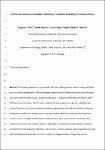A climate perturbation at the Middle –Late Jurassic Transition? Evaluating the isotopic evidence from south-central England
| dc.contributor.author | Watanabe, Sayaka | |
| dc.contributor.author | Heszler, B | |
| dc.contributor.author | Tansley Charlton, L-M | |
| dc.contributor.author | Cox, J | |
| dc.date.accessioned | 2023-11-01T17:25:22Z | |
| dc.date.available | 2023-11-01T17:25:22Z | |
| dc.date.issued | 2023-10 | |
| dc.identifier.issn | 0031-0182 | |
| dc.identifier.issn | 1872-616X | |
| dc.identifier.other | 111755 | |
| dc.identifier.uri | https://pearl.plymouth.ac.uk/handle/10026.1/21519 | |
| dc.description.abstract |
The Jurassic greenhouse is punctuated by short cooling intervals. Some published oxygen isotope records of belemnite rostra and fish teeth have been interpreted to reveal a prominent decrease in seawater temperature during the Late Callovian–Early Oxfordian. This is in part the basis for a proposed an ice age at the Middle-Late Jurassic Transition. In contrast relatively constant oxygen isotope records and therefore seawater temperatures as well as carbon isotope values characterized by significant scatter but showing more positive values during the middle and late Callovian have been reported from elsewhere. This research has constructed a stable isotope stratigraphy (from belemnites, Gryphaea and oysters) principally from the Callovian-Oxfordian interval (from southern England) and integrated these data with existing data to assess the pattern of carbon and oxygen isotopic change. Our marine macrofossil record reveals isotopic patterns that are generally comparable with other European basins. Carbon isotopic trends are consistent with bulk carbonate carbon isotope records displaying systematic fluctuations, the largest of which (Middle Callovian, Calloviense/Jason Zones to Early Oxfordian, Mariae Zone) corresponds to previously identified phases of environmental perturbation. Such a trend may have resulted from enhanced burial and preservation of organic matter, leaving the seawater enriched in the heavy carbon isotope. Inferred cooling, derived from our oxygen isotope data from southern England, occurs within the Late Callovian and the Early Oxfordian (Athleta to Mariae zones). Cooling post-dates this positive carbon isotope excursion. Enhanced carbon burial and atmospheric carbon dioxide draw down may have induced cooling. In this study the analysis of a single region (southern England) allows critical factors controlling the oxygen isotopic composition of the carbonates (e.g. temperature and the oxygen isotopic composition of the solution from which the carbonates precipitated) to be more comparable. If Jurassic polar climates were truly warm such a degree of cooling would undoubtedly lead to cooler polar temperatures – but only with seasonal ice. | |
| dc.format.extent | 111755-111755 | |
| dc.language | en | |
| dc.publisher | Elsevier BV | |
| dc.subject | Dorset | |
| dc.subject | Jurassic | |
| dc.subject | Callovian | |
| dc.subject | Oxfordian | |
| dc.subject | Carbon and oxygen isotopes | |
| dc.subject | Belemnites | |
| dc.subject | Gryphaea | |
| dc.subject | Oysters | |
| dc.title | A climate perturbation at the Middle –Late Jurassic Transition? Evaluating the isotopic evidence from south-central England | |
| dc.type | Journal Article | |
| plymouth.author-url | https://www.webofscience.com/api/gateway?GWVersion=2&SrcApp=PARTNER_APP&SrcAuth=LinksAMR&KeyUT=WOS:001069229500001&DestLinkType=FullRecord&DestApp=ALL_WOS&UsrCustomerID=11bb513d99f797142bcfeffcc58ea008 | |
| plymouth.volume | 628 | |
| plymouth.publication-status | Published | |
| plymouth.journal | Palaeogeography, Palaeoclimatology, Palaeoecology | |
| dc.identifier.doi | 10.1016/j.palaeo.2023.111755 | |
| plymouth.organisational-group | |Plymouth | |
| plymouth.organisational-group | |Plymouth|Research Groups | |
| plymouth.organisational-group | |Plymouth|Faculty of Science and Engineering | |
| plymouth.organisational-group | |Plymouth|Faculty of Science and Engineering|School of Geography, Earth and Environmental Sciences | |
| plymouth.organisational-group | |Plymouth|Research Groups|Marine Institute | |
| plymouth.organisational-group | |Plymouth|REF 2021 Researchers by UoA | |
| plymouth.organisational-group | |Plymouth|Users by role | |
| plymouth.organisational-group | |Plymouth|Users by role|Academics | |
| plymouth.organisational-group | |Plymouth|REF 2021 Researchers by UoA|UoA07 Earth Systems and Environmental Sciences | |
| plymouth.organisational-group | |Plymouth|Users by role|Researchers in ResearchFish submission | |
| dc.date.updated | 2023-11-01T17:25:15Z | |
| dc.rights.embargodate | 2023-11-04 | |
| dc.identifier.eissn | 1872-616X | |
| rioxxterms.versionofrecord | 10.1016/j.palaeo.2023.111755 |


